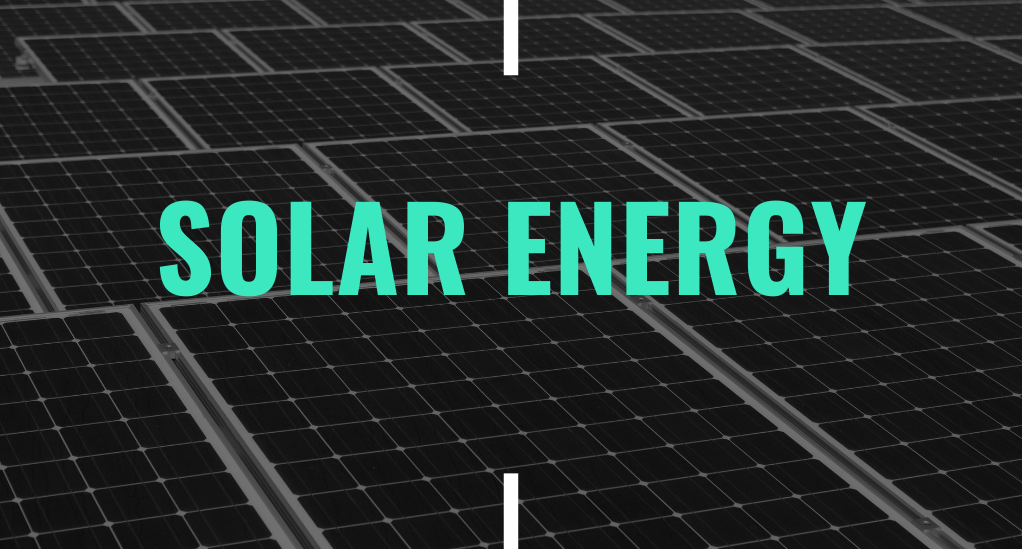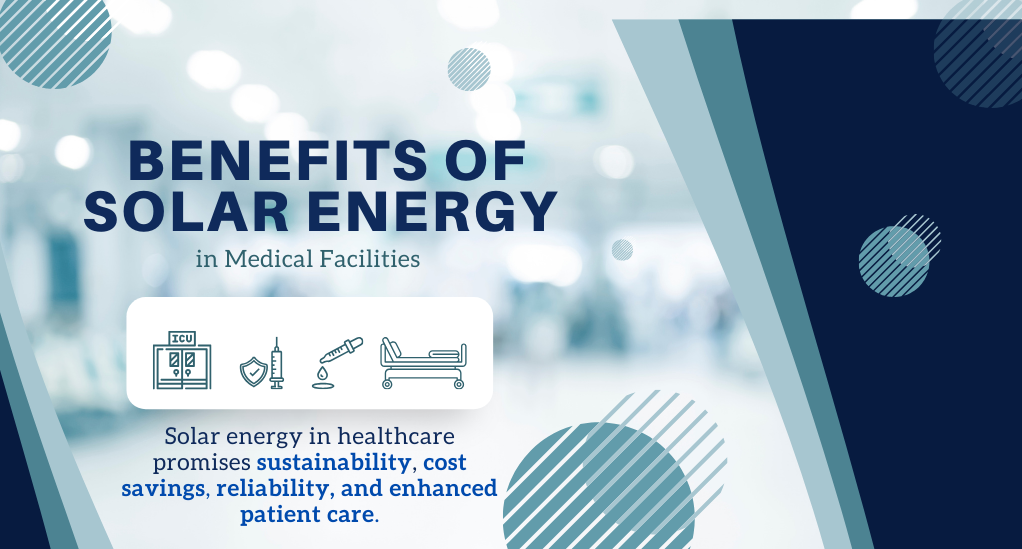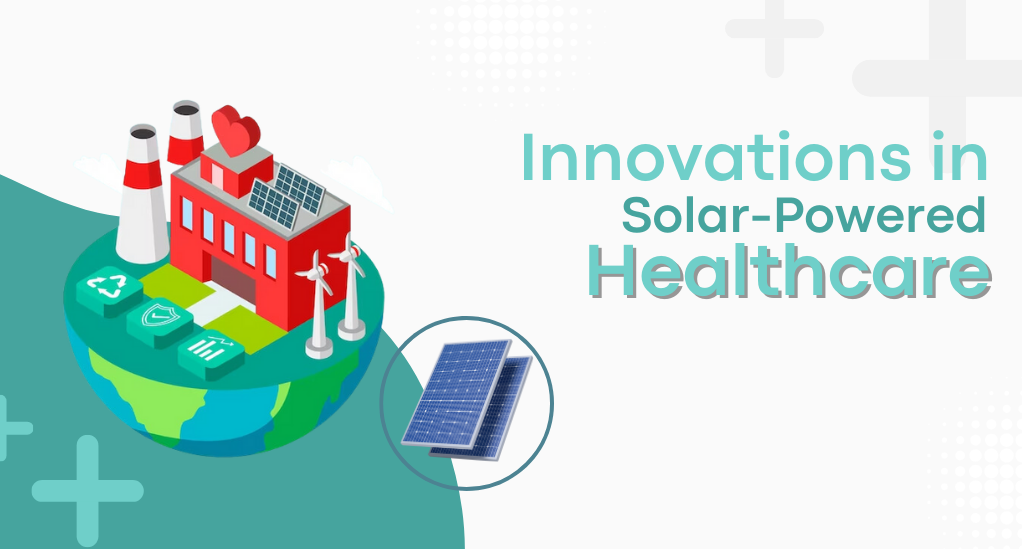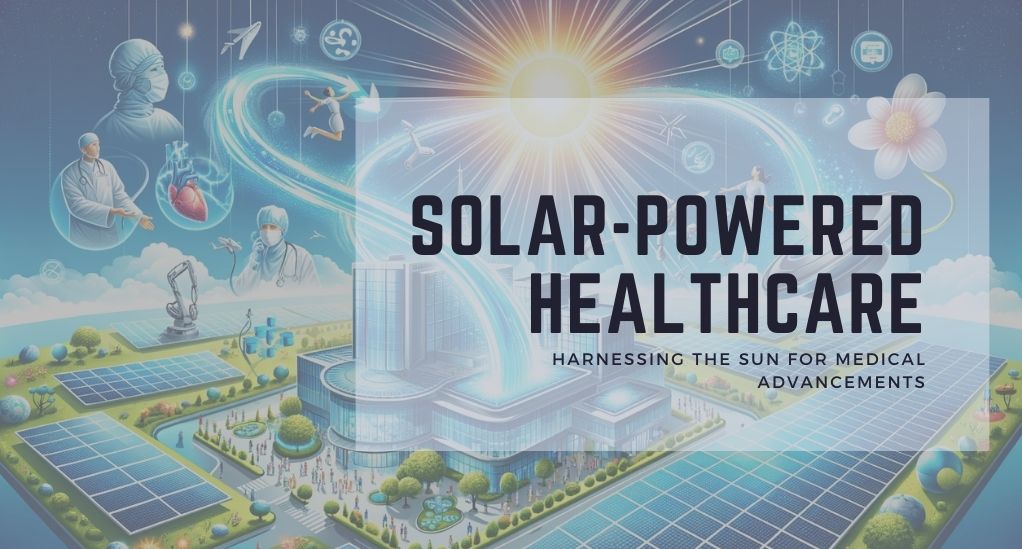In an era where sustainability is not just a buzzword but a necessity, the healthcare sector is undergoing a transformative shift towards greener alternatives. Hospitals and medical facilities, traditionally high consumers of energy due to their round-the-clock operations, are now looking towards the sun for a brighter, cleaner future. Solar-powered healthcare is emerging as a beacon of hope, promising not only environmental benefits but also operational efficiency and long-term cost savings.
The healthcare sector is one of the largest carbon emitters globally. According to the World Health Organization, the health sector contributes to approximately 4.4% of global net emissions. This not only has environmental implications but also directly impacts public health, with air pollution and climate change being linked to a myriad of health issues, from respiratory diseases to heat-related illnesses.
Given this backdrop, the need for renewable energy sources in healthcare is evident. Solar energy, with its vast potential and decreasing installation costs, presents a viable solution. By harnessing the power of the sun, medical facilities can significantly reduce their carbon footprint, ensuring a healthier environment for all.
Why Solar Energy?

Solar energy is abundant, clean, and increasingly affordable. Over the past decade, the cost of solar photovoltaic (PV) panels has dropped by more than 70%, making it a competitive alternative to traditional energy sources. Moreover, solar installations offer a dual benefit – they can be used to generate electricity and also to heat water, a significant requirement in many medical procedures.
| Advantages of Solar Energy in Healthcare | |
|---|---|
| Sustainability | Solar energy is a clean and renewable source, ensuring reduced carbon emissions. |
| Cost Savings | After the initial investment, solar installations can lead to significant savings in electricity bills. |
| Reliability | Solar power systems, especially those with battery storage, can provide uninterrupted power, crucial for medical facilities. |
| Scalability | Solar installations can be expanded based on the energy needs of the facility. |
The shift towards solar-powered healthcare is not limited to a specific region or country. From rural clinics in Africa using solar panels to power essential medical equipment to large hospitals in Europe harnessing solar energy for their daily operations, the movement is truly global. This widespread adoption is a testament to the universal appeal and undeniable benefits of solar energy in healthcare.
The Current Energy Landscape in Healthcare
The healthcare sector, with its round-the-clock operations and critical equipment, is a significant consumer of energy. Traditionally reliant on non-renewable sources, this energy consumption has both environmental and financial implications. However, with the global shift towards sustainability and the increasing viability of renewable energy options, there’s a growing momentum in the medical community to reevaluate and transform its energy landscape. Solar power, with its myriad benefits, is emerging as a frontrunner in this green revolution, offering hospitals and medical facilities a sustainable and efficient energy alternative.
Traditional Energy Sources: A Double-Edged Sword
Hospitals and medical facilities are among the most energy-intensive establishments. Their need for consistent and reliable power to operate life-saving equipment, maintain controlled environments, and ensure patient comfort is paramount. Traditionally, these facilities have relied heavily on non-renewable energy sources such as coal, natural gas, and diesel generators.
While these conventional sources have provided the necessary power, they come with a host of challenges:
- Environmental Impact: Burning fossil fuels releases a significant amount of greenhouse gases, contributing to global warming and climate change. Additionally, the extraction and transportation of these fuels can lead to environmental degradation and habitat loss.
- Operational Costs: The volatile prices of fossil fuels can lead to fluctuating energy bills, making budgeting and financial planning challenging for healthcare administrators.
- Reliability Concerns: While generally consistent, traditional energy sources can be susceptible to disruptions. Natural disasters, supply chain issues, or geopolitical tensions can lead to energy shortages, putting patients at risk.
The Green Transition: A Growing Awareness
The past decade has witnessed a growing awareness of the environmental and financial implications of non-renewable energy in healthcare. Stakeholders, ranging from policymakers to hospital administrators, are recognizing the need for a sustainable energy transition.
Several factors are driving this change:
- Regulatory Push: Many governments worldwide are setting ambitious carbon neutrality targets, leading to stricter regulations on carbon emissions. Healthcare facilities, as significant energy consumers, are often at the forefront of these regulatory changes.
- Financial Incentives: To promote the adoption of renewable energy, several countries offer tax breaks, grants, and subsidies for solar installations. These incentives can significantly offset the initial investment required for solar panels.
- Patient and Community Expectations: As the general public becomes more environmentally conscious, there’s a growing expectation for institutions, including hospitals, to adopt sustainable practices. Embracing renewable energy can enhance a facility’s reputation and community standing.
Embracing the Sun: The Solar Revolution
The shift towards renewable energy in healthcare is not just about compliance or public relations. It’s a strategic move that offers tangible benefits. Solar energy, in particular, stands out for its accessibility, affordability, and efficiency.
With advancements in solar technology, even facilities in regions with limited sunlight can harness solar power effectively. Moreover, innovations like solar battery storage systems ensure that hospitals can store excess energy generated during the day for use during nighttime or cloudy days.
Benefits of Solar Energy in Medical Facilities

Solar energy’s integration into medical facilities heralds a new era of sustainable healthcare. Beyond the evident environmental advantages of reduced carbon emissions, solar power offers medical establishments tangible cost savings, enhanced operational reliability, and a positive community impact. As the world increasingly leans towards green solutions, the healthcare sector stands to gain immensely from this renewable energy source, ensuring not only a reduced ecological footprint but also improved patient care, operational efficiency, and long-term financial benefits.
1. Cost-Efficiency and Long-Term Savings
One of the most compelling arguments for the adoption of solar energy in healthcare is the potential for significant cost savings. While the initial investment in solar infrastructure can be substantial, the long-term benefits far outweigh the costs. Once installed, solar panels have minimal maintenance costs and can last for 25 years or more. Over time, the savings on electricity bills can be substantial, allowing medical facilities to allocate funds to other critical areas, such as patient care, research, and infrastructure development.
2. Environmental Stewardship
Solar energy is a clean and renewable source, producing no greenhouse gas emissions once installed. By transitioning to solar power, medical facilities can drastically reduce their carbon footprint. This not only helps combat climate change but also positions the facility as an environmentally responsible entity. Such initiatives resonate well with the community, patients, and staff, fostering a positive image and promoting eco-friendly practices.
3. Enhanced Reliability and Resilience
Power outages can be catastrophic for medical facilities, where even a brief interruption can jeopardize patient lives. Solar energy systems, especially when paired with battery storage, offer a reliable power source. In the event of grid failures or natural disasters, solar installations can ensure uninterrupted power supply, safeguarding critical medical equipment and patient care.
4. Scalability and Flexibility
Solar installations offer a degree of scalability that traditional energy sources often can’t match. As a hospital expands or its energy needs grow, additional solar panels can be installed to meet the increased demand. This flexibility ensures that the facility is not only future-proofed against rising energy needs but also poised to make the most of technological advancements in solar energy.
5. Promoting Healthier Communities
The shift to solar energy goes beyond financial and environmental benefits. By reducing reliance on fossil fuels, medical facilities can contribute to cleaner air and a healthier environment. Air pollution, often a byproduct of burning fossil fuels, is linked to a range of health issues, from respiratory problems to cardiovascular diseases. By championing solar energy, healthcare institutions can play a pivotal role in promoting public health and well-being.
Challenges and Considerations
While the transition to solar energy in healthcare is laden with numerous benefits, it’s essential to acknowledge the challenges and considerations that come with it. By understanding these hurdles, medical facilities can better prepare and strategize for a smoother integration of solar power.
Initial Investment and Infrastructure Changes
Solar installations, especially for large medical facilities, require a significant upfront investment. The costs include not just the solar panels but also the associated infrastructure, such as inverters, battery storage systems, and mounting structures. For many hospitals, especially those operating on tight budgets, this initial outlay can be daunting.
Solutions:
- Financing Options: Many financial institutions now offer loans and financing options tailored for solar projects. These can help spread out the costs over time.
- Government Incentives: Several governments provide subsidies, tax breaks, or grants to promote the adoption of solar energy. Medical facilities can leverage these incentives to offset some of the initial costs.
Maintenance and Longevity of Solar Panels
While solar panels have a long lifespan, typically 25-30 years, they do require regular maintenance to ensure optimal performance. Dust, debris, and weather conditions can affect the efficiency of the panels. Additionally, other components, like inverters, might need replacement sooner than the panels.
Solutions:
- Regular Cleaning: Implementing a routine cleaning schedule can ensure that the panels operate at peak efficiency.
- Warranty and Insurance: Investing in panels with a robust warranty can safeguard against unforeseen issues. Additionally, insurance can cover potential damages from natural calamities.
Potential Space Limitations
Large medical facilities might face challenges in finding adequate space for solar installations, especially in urban settings. Rooftop installations might not provide enough area for the energy needs of a sprawling hospital.
Solutions:
- Vertical Installations: Some modern buildings are incorporating solar panels on the sides, making use of vertical space.
- Off-site Installations: Hospitals can invest in solar farms located elsewhere, channeling the energy to their facilities.
Navigating Regulatory and Permitting Hurdles
The installation of solar panels often requires navigating a maze of regulations, permits, and inspections. These can vary by region and can be time-consuming.
Solutions:
- Consultation: Engaging with experts or consultants familiar with local regulations can streamline the process.
- Collaboration: Partnering with experienced solar providers can ensure compliance with all regulatory requirements.
Future Prospects: Innovations in Solar-Powered Healthcare

The journey of solar-powered healthcare is just beginning, and the horizon is filled with promising innovations and advancements. As technology evolves and the world becomes more attuned to the imperatives of sustainability, the nexus between solar energy and healthcare is set to strengthen.
Advanced Photovoltaic Materials
The traditional silicon-based solar panels are undergoing a transformation, with researchers exploring new materials like perovskites. These materials promise higher efficiency rates, potentially revolutionizing the amount of energy that can be harnessed from the sun. For medical facilities, this could mean smaller installations delivering the same, if not more, power.
Integration of AI and Smart Grids
The future of solar-powered healthcare is not just about harnessing energy but also optimizing its use. With the integration of Artificial Intelligence (AI) and smart grids, medical facilities can predict their energy needs, store excess energy efficiently, and distribute it where it’s needed most. This ensures not only energy efficiency but also operational excellence.
Portable Solar Solutions for Remote Care
Telemedicine and remote healthcare are gaining traction, especially in hard-to-reach areas. Portable solar solutions can power medical equipment, communication devices, and other essentials, ensuring that quality healthcare reaches every corner of the globe.
Solar-Powered Medical Devices
Beyond powering facilities, solar energy is finding its way into medical devices. From solar-powered hearing aids to wearable health monitors that charge under the sun, the possibilities are endless. These innovations can drastically improve the quality of life for patients, especially in regions with limited access to consistent power.
Building Integrated Photovoltaics (BIPV)
The buildings of the future might not just have solar panels on their roofs but integrated into their very fabric. BIPV involves incorporating photovoltaic materials into building components, such as walls, windows, and facades. This not only maximizes energy generation but also offers architectural and aesthetic benefits.
Collaborative Research and Development
The nexus between healthcare and solar energy is drawing researchers, policymakers, and industry leaders. Collaborative efforts are underway to tailor solar solutions specifically for healthcare needs, ensuring that the sector benefits from the latest advancements in renewable energy.
Conclusion
In the evolving landscape of global healthcare, the integration of solar energy stands out as a beacon of innovation and sustainability. As we’ve journeyed through the myriad benefits, real-world applications, challenges, and future prospects of solar-powered healthcare, it’s evident that this union of renewable energy and medical care is not just a fleeting trend but a transformative shift. Hospitals and medical facilities worldwide are recognizing the multifaceted advantages of harnessing the sun’s power, from significant cost savings and environmental stewardship to enhanced reliability and community engagement.
The journey towards a solar-powered healthcare future is laden with challenges, but the rewards are profound. As technology advances and the world grapples with the pressing imperatives of climate change and sustainable development, the healthcare sector emerges as a pivotal player. By championing solar energy, medical institutions not only pave the way for a cleaner, greener future but also underscore their commitment to holistic well-being, where environmental health and patient care converge. The future is bright, and as the sun continues to shine, it casts a hopeful glow on a healthcare system powered by sustainability, innovation, and care.

